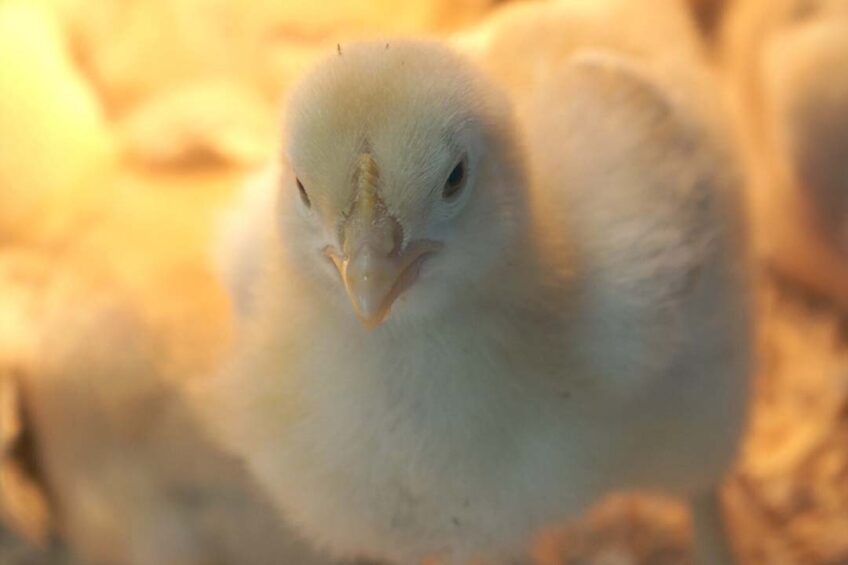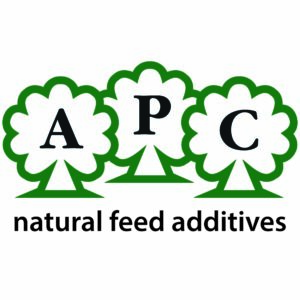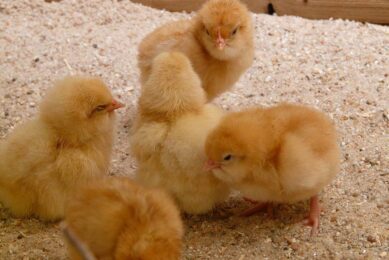More performance with reduced protein!

Despite protein reduced poultry feed – better performance parameters and less burden for the environment!
High protein levels are deemed a necessity in poultry feeds. However, these high protein levels also result in a suboptimal amino acid balance. Being out from the optimal relation for poultry feeding, part of them cannot be used for the protein synthesis. All these unused amino acids need to be deaminated via the liver. This in turn is a heavy burden for this important organ. Furthermore, the process of deamination needs energy, the most expensive nutrient in the poultry feed. It negatively influences the performance of the birds, but also the general health and immunity of the animals. On top of that, the unused amino acids are changed into nitrogen, when they are disposed from the body. This results in higher ammonia levels in the poultry house environment, which is a burden for the animals as well as for the workers, because it makes the respiratory tract more vulnerable to diseases.
Solving the problem
To solve this problem, the ammonia must be transported out from the houses with powerful ventilation systems. Once outside it puts pressure on the environment! Furthermore, the heating cost for the poultry houses is also considerably higher, because the fresh air has to be heated.
So, reducing protein in the poultry feed is not only an economic advantage, it results in healthier animals with increased immunity. One and the other results in a better overall performance of the animals, considering the key parameters like FCR, AVDG, increased egg mass and lower mortality.
Natural feed additive
The Austrian company Agrar Production & Consulting, short APC, has developed natural feed additives, which improve the living conditions for lacto bacteria in the intestine. This is the key for a better surface of the mucosa in the intestine and by that, better absorption from all nutrients. Easy to understand, that protein and other nutrients are better used under such conditions!
On top of that a more functional gut barrier is achieved, which prevents pathogens entering the blood stream.
Several university trials have shown that the groups with 2kg APC additives per ton ready feed, had a 13 fold increase of the lacto bacteria in the intestine than the control groups and this lead to a reduction in the pH from 6,7 to 6,2! That’s why the coliform bacteria were reduced to 10%.
Everybody in the business knows, that a healthier intestine result in healthier animals and of course less mortality!
The APC natural additives also have a selective ammonia binding effect in the intestine and improve the ions transfer. By that, the macro elements can be reduced in the formulas. Additional to the effects from the phytases!
Along with other effects from the reduced protein, a considerable reduction of ammonia can be measured, all together up to 50%
The reduction of macro elements leads to lower the cost of the formulas, reduce the acid puffer capacity in the feed, helps to keep the pH lower in the intestine and reduces the antagonism with trace elements!
Research
University trials clearly show that by reducing macro elements with 0,2% APC in the layer or breeder feed, the egg shells were stronger and heavier. This is very important in egg production, but even more for the breeders because the eggs are much more valuable. Furthermore, the higher density from the egg shells by feeding APC leads to less prenatal mortality, higher hatchability and heavier and healthier one-day chicks. This can be explained by the higher density of the egg shells, which helps avoid the penetration of pathogen bacteria during incubation.
Reducing protein in the feed has many advantages
As a conclusion we see that the reduction of protein has immense advantages for the environment, as with APC the amount of soya with its big ecological footprint can be reduced. With less soy we are able to reduce the overall CO2 emissions in feed production substantially. On top of that, with APC the emission of ammonia into the environment can be reduced significantly.
To produce poultry feed with the natural 0,2% APC feed additives means to have the above-mentioned advantages, developed for more than 30 years and with more than 55 years of employee experience!
 Beheer
Beheer


 WP Admin
WP Admin  Bewerk bericht
Bewerk bericht